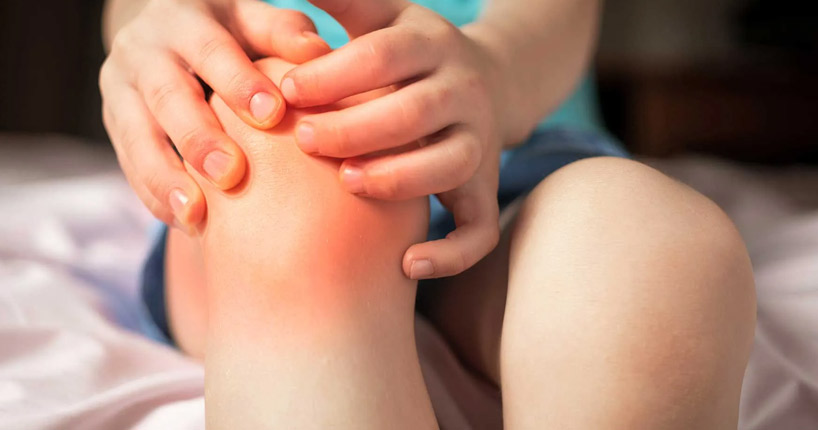Juvenile rheumatoid arthritis also known as juvenile idiopathic arthritis is a common type of musculoskeletal condition which affects children below the age of 16 years. It occurs when their body’s immune system starts attacking its own cells and tissues and leads to the inflammation of the joints. The cause of disease is unknown in most cases. However, some genetic factors and environmental triggers often play a role in the onset of juvenile idiopathic arthritis.
Symptoms
Juvenile arthritis can affect one joint or many. Symptoms include persistent joint pain, swelling, stiffness and tenderness in the joints especially in the morning, after a nap or prolonged sitting. The inflammation associated with juvenile arthritis is responsible for the formation of red/pink patches in the skin, persistent high fever, swollen lymph nodes, rashes on the chest, weight loss, limping, reduced motor skills, and fatigue. Certain complications including inflammation in the eyes - cataract, glaucoma, and blindness (if neglected and left untreated) can also occur.
Managing symptoms of juvenile arthritis in children
Treatment for juvenile arthritis is imperative in relieving pain, reducing swelling, increasing joint mobility, and preventing joint damage and complications. The treatment protocol includes:
- Exercise: Physical activities (light exercises) are important as they enable muscle strengthening and support joint flexibility. If not done, it may worsen the symptoms leading to more rigidity in the joints. Additionally, it helps in maintaining weight, improving sleep, and reducing anxiety and irritability in children
- Use of cold/hot packs: This is a very common therapy performed in every house to relieve stiff joints and muscle pain. Cold/hot packs or a hot shower especially in the morning help numb the pain and reduce inflammation
- Balanced diet: Eating a diet rich in anti-inflammatory components is considered essential for children suffering from juvenile arthritis. The diet should be rich in vitamin D, protein, healthy oils, fibre, and should consist of limited sugar. Children should eat plenty of fresh fruits and vegetables, whole grains, and healthy fats. Most importantly they should avoid foods that have high sugar content such as processed foods as they may increase the inflammation.
- Rest: Rest is essential to avoid flareups and reduce fatigue. A healthy sleep routine helps improve health, manage pain, and reduce anxiety.
Below are some physical activities that a child can follow to avoid flareups:
- Swimming is an excellent form of exercise for children with arthritis. It improves muscles strength, range of motion and is safe for the joints
- Cycling is a low impact exercise which helps improve muscle strength, balance, and motor skills
- Yoga is also beneficial in reducing pain over time, improving flexibility and relieving stress.
- Stretching helps expand the range of motion by improving flexibility.
- Strengthening exercises help maintain muscle strength. It promotes muscle strength which helps support the joints. They are a combination of isometric and isotonic exercises. Isometrics are safe and tightens muscles without moving the joint. These include, plank, squats, wall sit, and leg extensions. Isotonic exercises involves both muscles and joints through a certain motion. These include, aerobic exercises, dancing swimming, walking, running slowly, hiking, and swimming.
If your child has joint pain and swelling, it is important to consult a doctor. A diagnosis provide clarity and there will be a proper treatment plan in place to reduce inflammation and pain. Parents specifically can help by incorporating better lifestyle habits in their child’s routine – enabling them to manage their symptoms better.
 Book Appointment
Book Appointment

